Chef Joe Johnson has worked in some of the most demanding high-end kitchens in the USA, he won the TV show CHOPPED, and yet he nearly met his match attempting this recipe on the forthcoming episode of Tiny Galley... Not one to back down from a challenge, Chef Joe prepared this delicious recipe while we were under sail on Santa Monica Bay! Sometimes the bay is placid and calm as a lake, other times it's more clearly part of the deep Pacific Ocean with constant motion. Joe found himself below deck, in the rather warm galley attempting to juggle the timing of multiple dishes while we rocked and rolled with the Pacific. Nevertheless, the recipe was executed beautifully, despite a few "breaks" for fresh air!
Ingredients:
- Four portions of 6 oz. skinless Nordic Blu salmon fillets
- 1 Bunch Tarragon
- 1 Bunch Mint
- 3 Large Fennel Bulbs
- 10 Green Zebra Tomatoes or 2 Large Heirloom Tomatoes
- 8 oz. Wild Arugula
- 4 Large Radishes
- 2 Large Heirloom Tomatoes
- 1 Lemon
- tt (to taste) Extra Virgin Olive Oil
- tt Sea Salt
- tt Black Pepper
Nordic Blu Salmon
Pick the tarragon and mint leaves, finely chop the herbs and combine. As always, use a paper towel to pat dry the moisture from the Nordic Blu Salmon portions. Rub all of the fillets lightly in olive oil, then season lightly with sea salt. Gently sprinkle the herbs all over the salmon. Store the salmon in a container in the refrigerator for at least 30 minutes to 1 hour.
Green Zebra Tomato Sauce
Rinse off your tomatoes, then quarter or large dice them. Place in a medium saucepot, over high heat, and cover with the lid. Once the pan gets just below smoking hot, prepare yourself with the tomatoes in a bowl, a bottle of olive oil, and the pot lid in hand. To prevent the kitchen from getting smoky you must work fast. Quickly add some olive oil to coat the bottom of the pan, then immediately add the tomatoes and cover with the lid. Adjust the heat to medium and allow the tomatoes to cook for about 2 minutes before removing the lid, removing the lid too soon will cause the tomatoes to splatter everywhere. After 2 minutes, uncover the tomatoes and season lightly with salt, at this point the tomatoes should have begun to breakdown and liquefy. Reduce the heat to medium-low and allow the tomatoes to continue to cook for about 10 minutes or until the liquid has begun to reduce slightly. Pour the cooked tomatoes into a blender or using a hand blender, blend the tomato mixture until smooth. While blending, stream in about 4 tablespoons of olive oil to mellow out the acidity of the sauce, after blending to smooth texture, season to taste. Reserve the tomato sauce warm for later use.
Braised Fennel:
Using a mandolin or a very sharp knife, cut the fennel in half from top to bottom, then cut into thin slices. In a medium saucepot over a medium flame, heat 1 tablespoon of olive oil, add the fennel with a little sea salt. Sweat the fennel until it releases moisture, add enough water to barely cover the fennel, and allow that water to reduce until almost dry. Repeat the process and allow the water to reduce until the fennel is tender. Season to taste with olive oil and sea salt. Reserve warm for further use.
Arugula Salad:
Rinse and dry the heirloom tomatoes and radishes. Using a very sharp knife thinly slice the radish and dice the tomatoes. In a bowl gently toss the arugula with the diced tomatoes and radish. Squeeze the juice from half of a lemon over the arugula salad followed by 2 tablespoons of olive oil. Gently toss the salad again to mix in the lemon juice and oil, then season to taste with sea salt and black pepper.
To Finish:
Heat a large sauté pan, heat a high smoke point oil like grapeseed over a medium-high flame. Right before the oil begins to smoke add all four salmon fillets, dropping the fillets away from yourself, that way the oil from the pan doesn’t splash on you. Make sure you place the salmon in the pan with the side that the skin would be on facing up. Reduce the flame to medium-low and allow the salmon to sear for about 5 minutes or until the salmon is cook 2/3 of the way through. Flip the salmon and allow to cook on the other side for about 1 minute for a “Rose” salmon or 2-3 minutes for a “cooked through” salmon. Arrange the warm braised fennel on a platter, top the fennel with the four salmon filets, finish by spooning on the warm zebra tomato sauce. Finish the dish with a light squeeze of lemon juice, a drizzle of olive oil, sea salt, and black pepper.


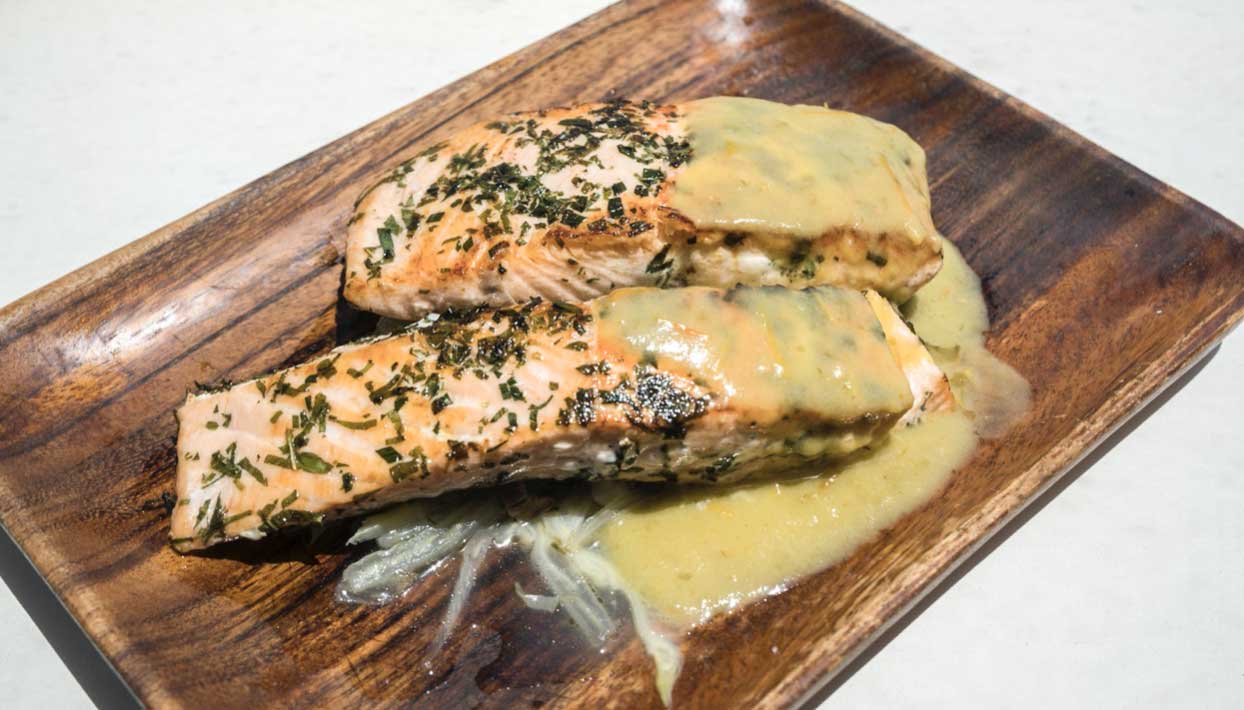
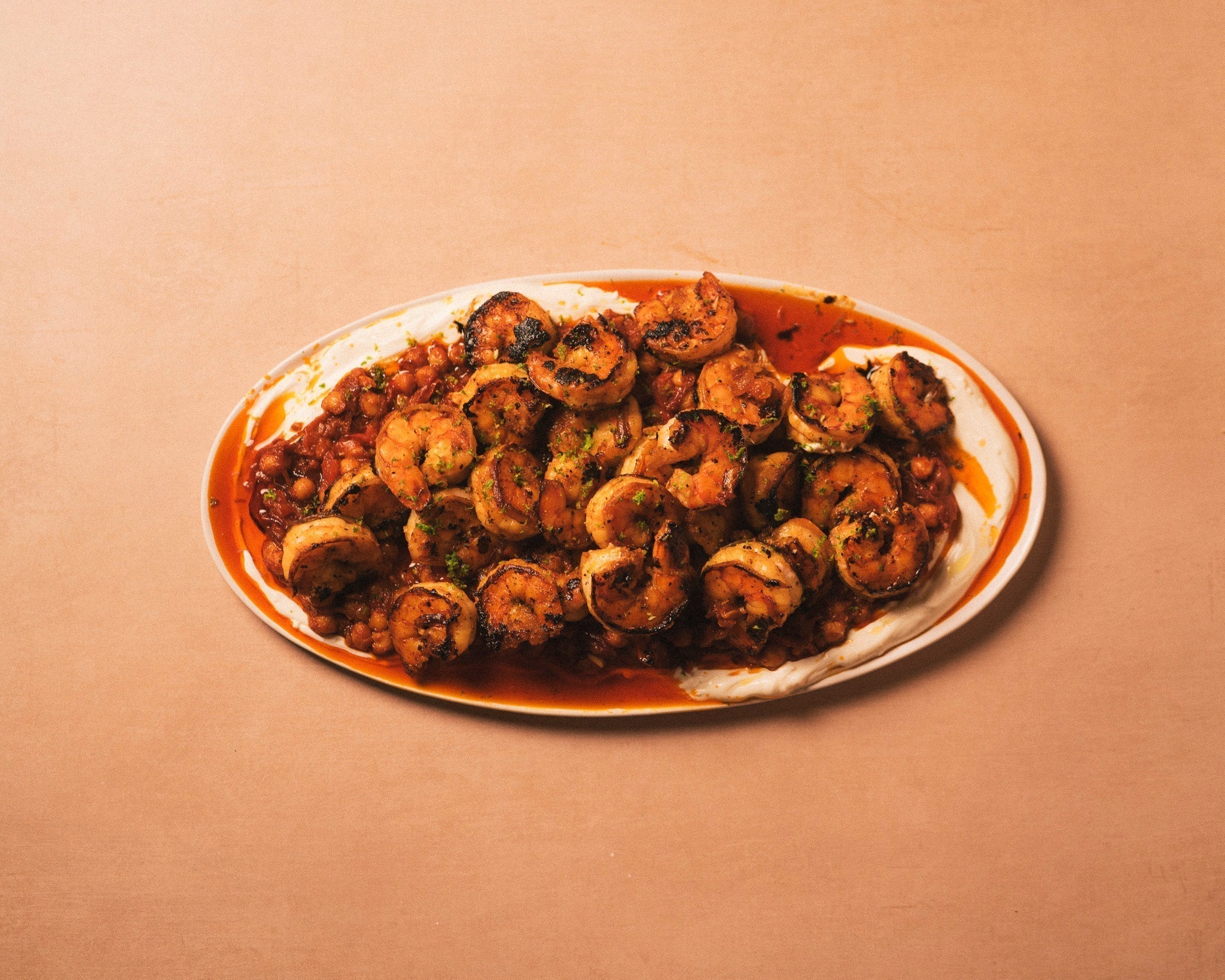
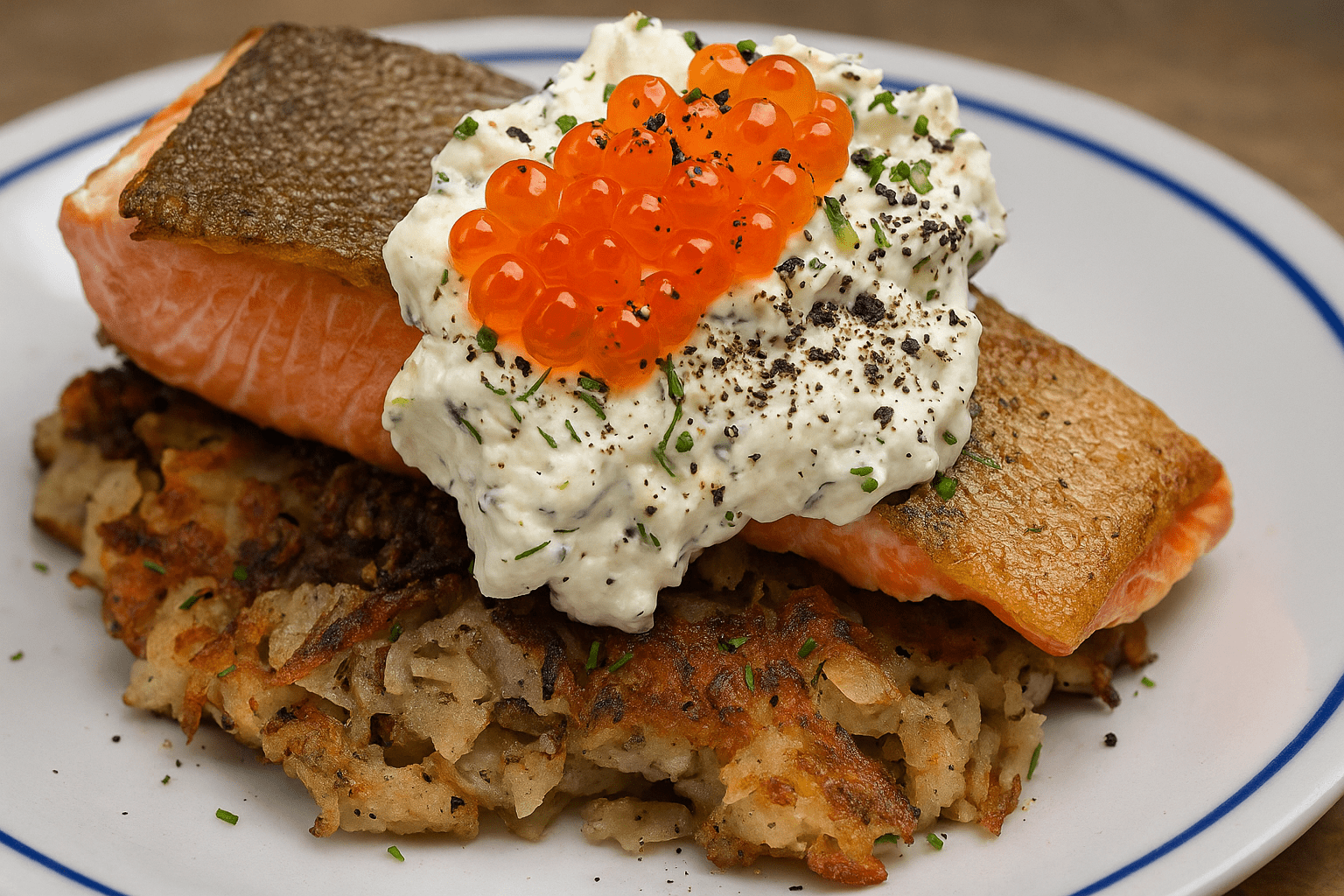
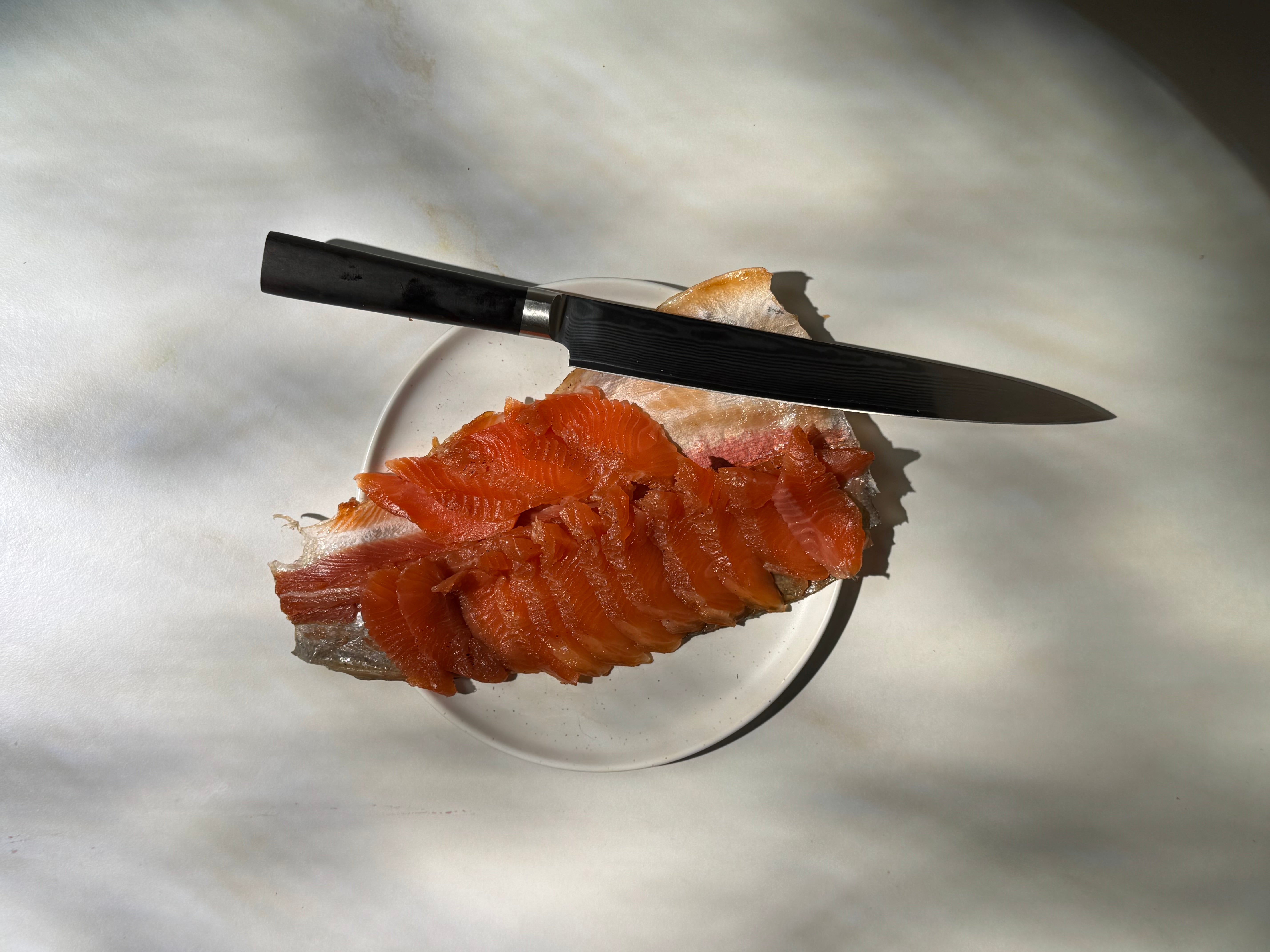
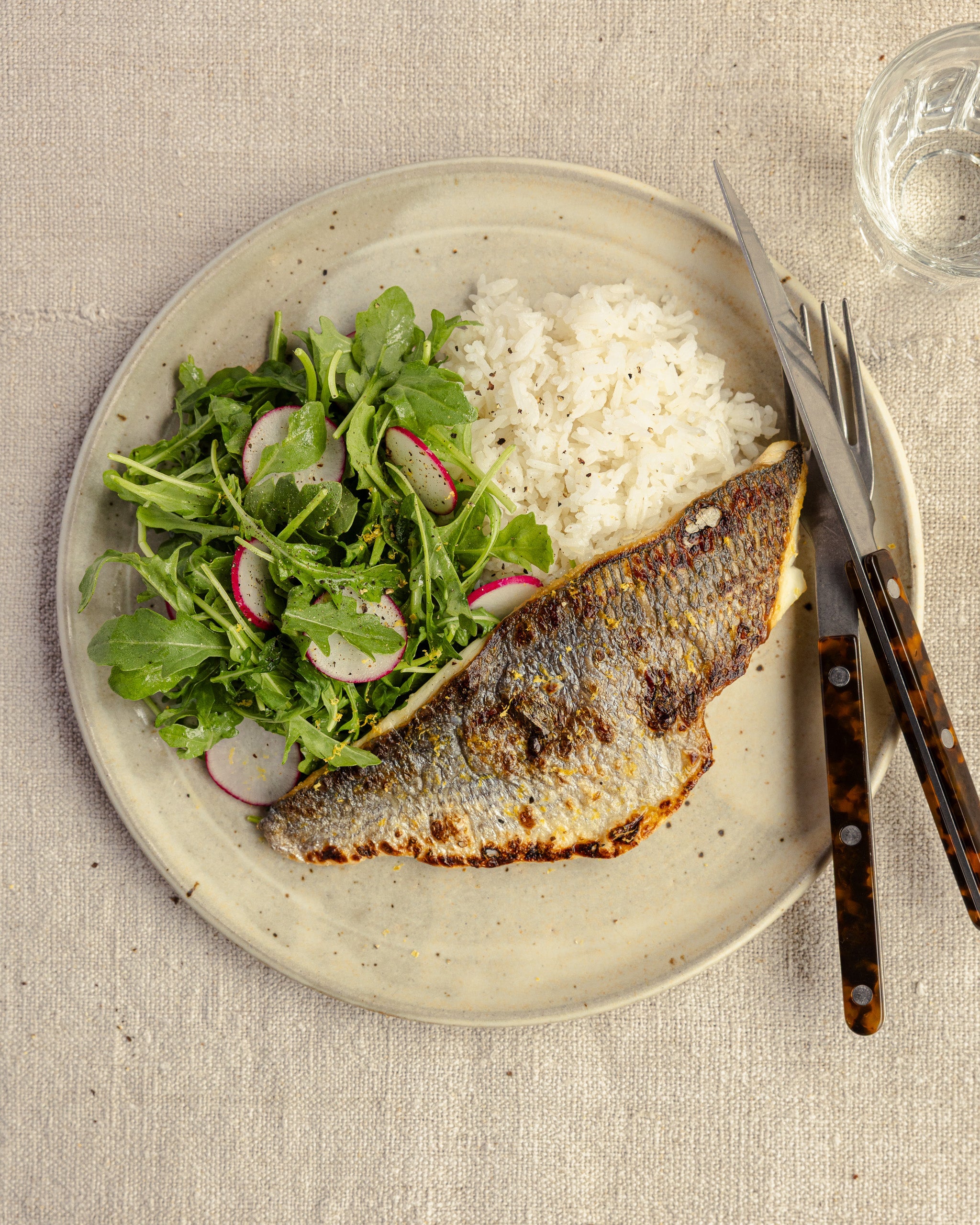
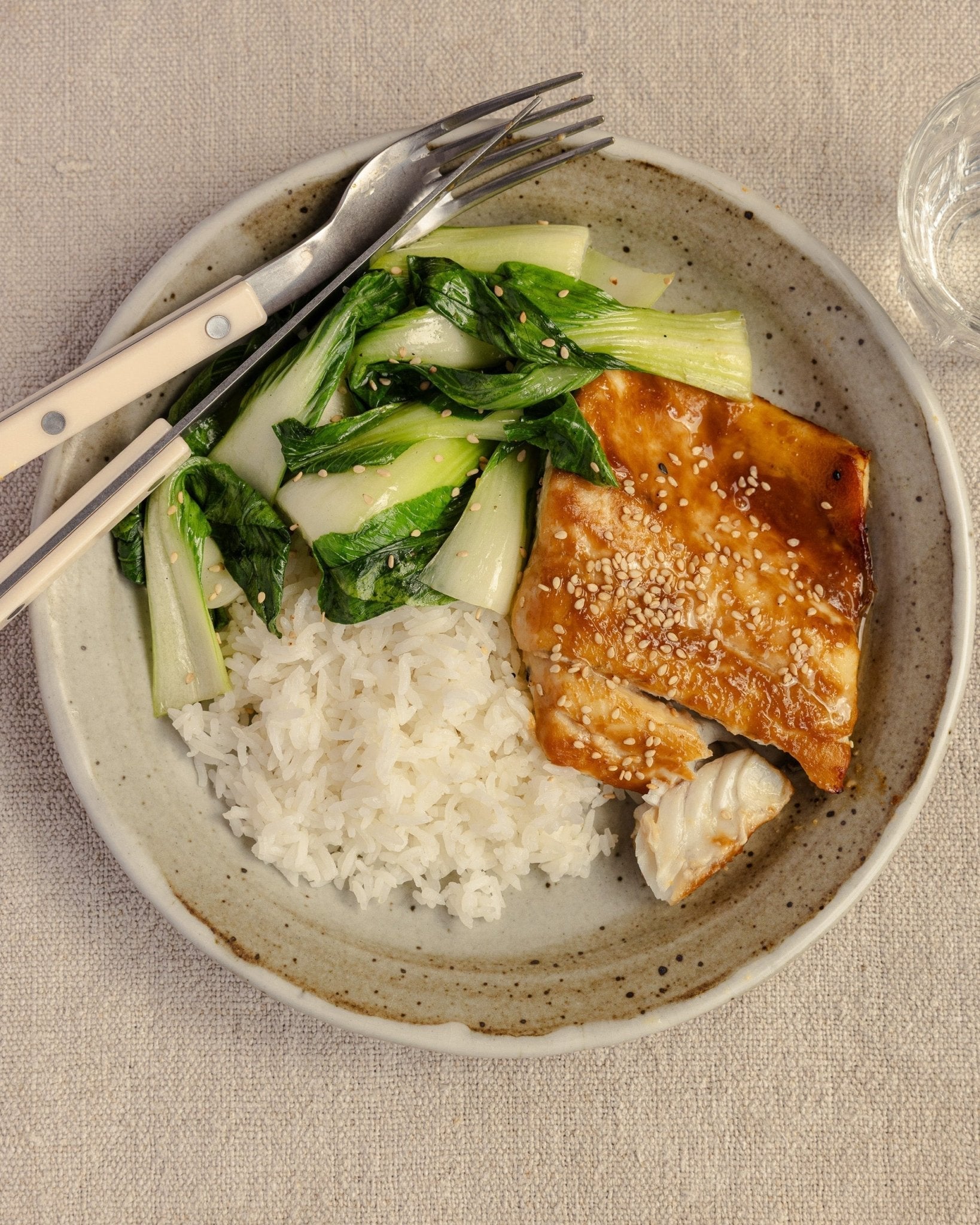
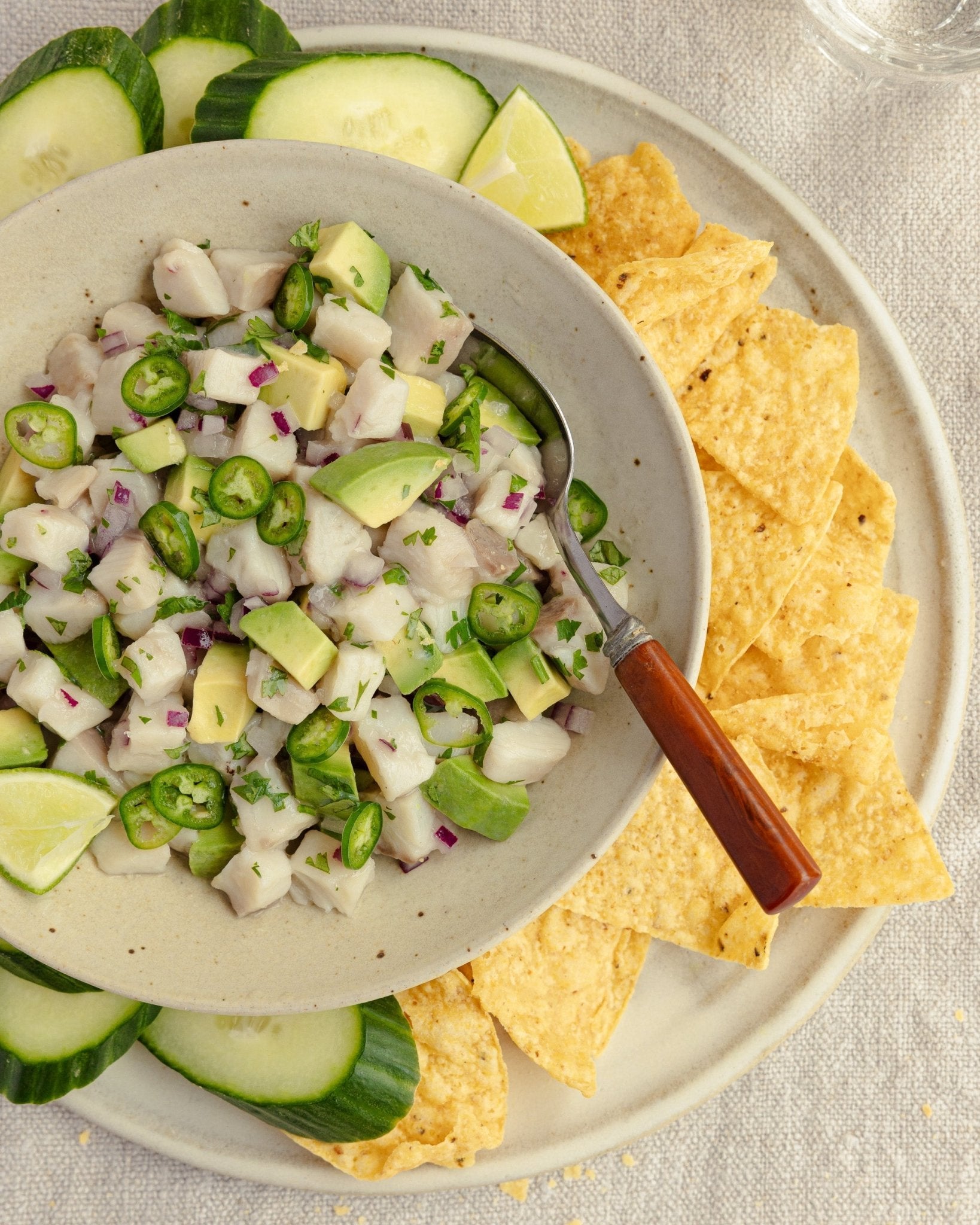
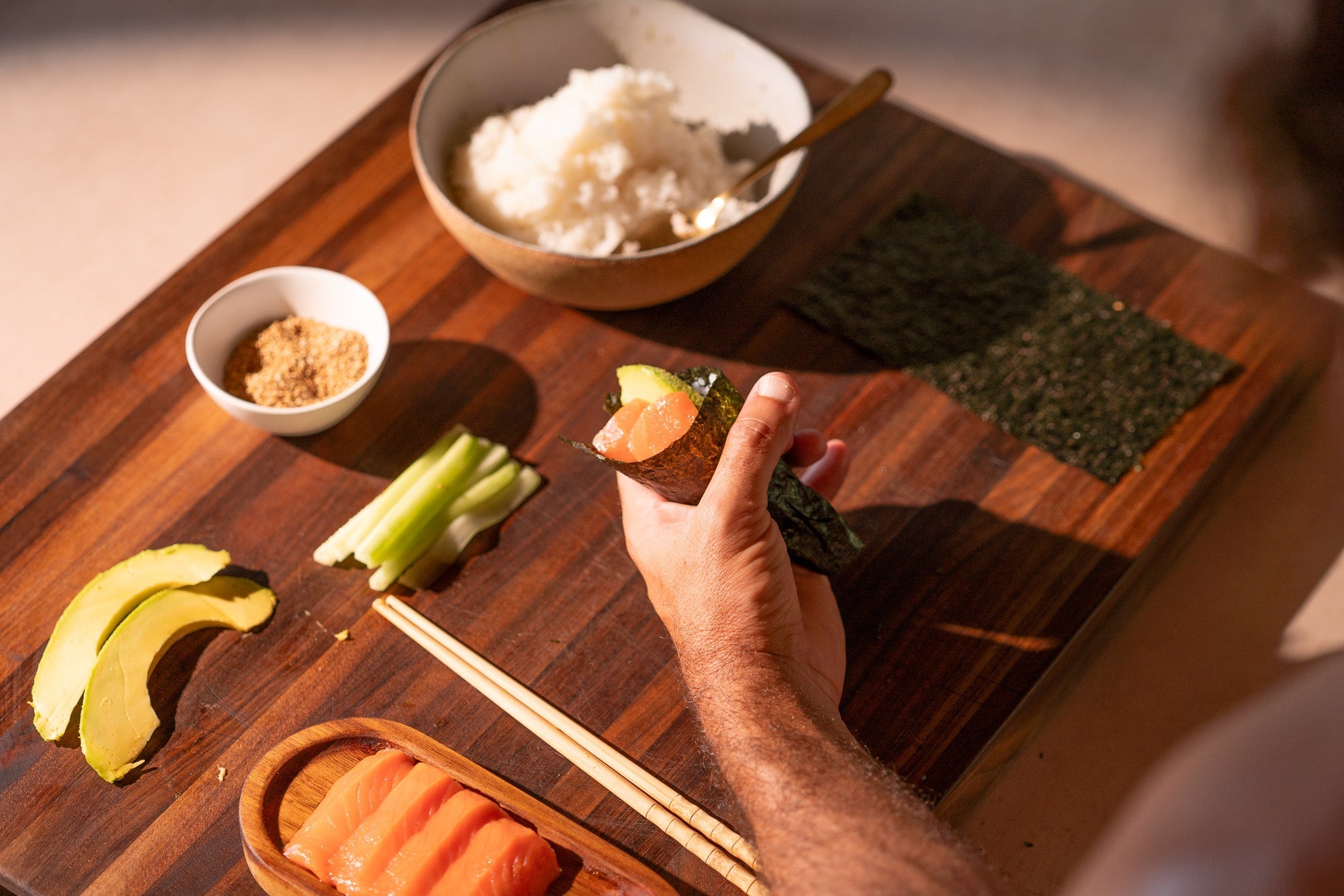
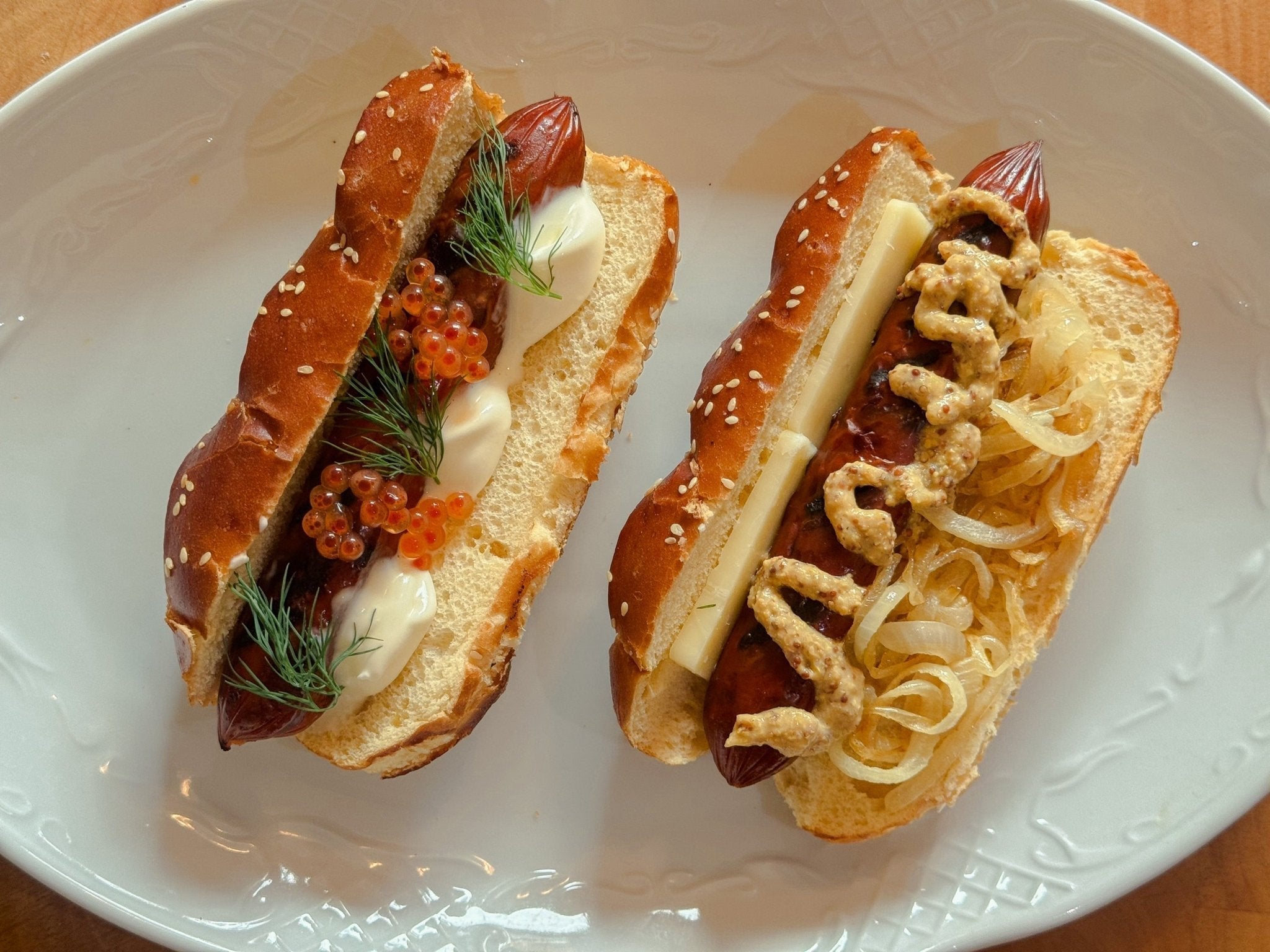
Share:
Tahitian Poisson Cru Recipe w/ Yellowtail Kanpachi & Bullwhip Hot Sauce
Glitne Halibut Poke Ceviche